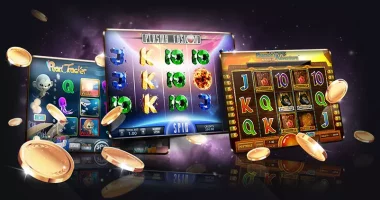A blind in poker is a position at the table that requires a mandatory bet before receiving hole cards. There are two types of blinds at games at the Spinanga casino: the big blind and the small blind (depending on the size of the bet), and each round, the blind positions rotate to the next player at https://spinanga.com/nz/.
The blind position is vulnerable because the player in this spot acts first on the flop and post-flop, is forced to pay blindly, and is under the greatest pressure from opponents.
The Concept Of The Blind In Poker
At the start of the game, a mandatory bet is required before the cards are dealt. In poker, this is called the blind. In almost all variants of the classic game, this blind bet is part of the rules.
The blind serves to increase players’ interest in the current hand. Without this mandatory initial bet, players with weak hands could fold without losing money. The initial investment motivates players to fight for the chips until the end, as the player with the most chips wins the game. Besides the blind, the bets in the game constantly increase, depending on the poker format. In a major tournament, the stakes are high and increase rapidly, while in private games, their size depends on the players’ means.
“Blind bets” can start from just a few cents and go up to thousands of dollars. This makes the blind crucial for determining bet sizes and stack management throughout the game at the Spinanga casino. All financial calculations in poker are based on the size of these initial bets. There are two types of blinds in poker: the big blind and the small blind.
Blind As A Table Position
Besides being a type of bet, in games like Texas Hold’em, “blind” also refers to specific positions at the table. These positions belong to players who make the “blind bets.” The players sitting in the small and big blind positions are the ones who must place the bets.
Main Table Positions in Poker
Poker table positions are divided into four main groups:
- Early Position (seats closest to the dealer, on the left);
- Late Position (includes the dealer and those seated to the right);
- Small and Big Blinds (the positions considered the most disadvantageous due to the mandatory bet);
- Middle Position (between early and late positions).
The first action after receiving two hole cards is made by a player in the UTG group. These players sit to the left of the big blind, so one of them must make the first decision. This stage is called the preflop in poker. Here, the players in the small and big blind positions act later than the rest.
The Small and Big Blind Positions
Let’s focus on these positions. The small blind sits to the left of the dealer and places only half of the bet. To their left is the big blind, who puts in double the small blind’s amount. The dealer button is called the button and moves around the table, meaning the small and big blind positions rotate among the players.
Realizing Equity in Blind Defense
Be cautious with hands that have little value in the current round. If you want to defend the blind with such a weak hand, think twice. A bad combination makes it hard to move up the leaderboard and form winning pairs.
Equity realization during the defense of weak hands is difficult because opponents will likely have stronger cards, making the game more aggressive.
If you raise without strong cards, finishing the game successfully becomes nearly impossible.
In the big blind position during the preflop stage, a player needs to contribute up to 18% of their equity. However, defending weak hands in this case brings no benefit, and you’ll only realize half of your predicted share. Continuing to defend against theft will gradually reduce your equity percentage.
Common Mistakes on the Small Blind
This position is especially tricky for new Spinanga casino players. In the small blind, the goal is to lose as little money and chips as possible. It’s better to realize equity after the positions change. Because of this, players in the small blind have two strategies:
- With Good Cards: Don’t fold. You can call or raise without responding to opponents’ raises.
- With Bad Cards: Fold to avoid unnecessary financial losses. This saves on mandatory and additional bets.
Inexperienced players often make the following mistakes on the small blind:
- Doubling the bet when other players have folded. If you have a good hand, blind stealing is unnecessary. It’s more effective to bluff and convince the opponent on your left to fold.
- Defending the blind with bad cards, reducing your equity.
- Entering the flop with a weak hand. In most cases, this is a financial waste because the three new cards on the table don’t improve your chances with a poor initial hand.
When playing with a large group (7-9 players), it’s essential to be cautious in the small blind position. It’s best to fold bad cards and not raise the bet. If the table is short (4-5 players), you can afford to play at the Spinanga casino more aggressively — with faster position changes, this strategy can be effective.
Bob Andrews is a content editor for Landscape Insight, With a background in journalism, Bob brings a unique perspective to his role as he oversees the creation and publication of a wide range of content, including articles, podcasts, and videos. You can reach Bob at – [email protected] or by Our website Contact Us Page.








